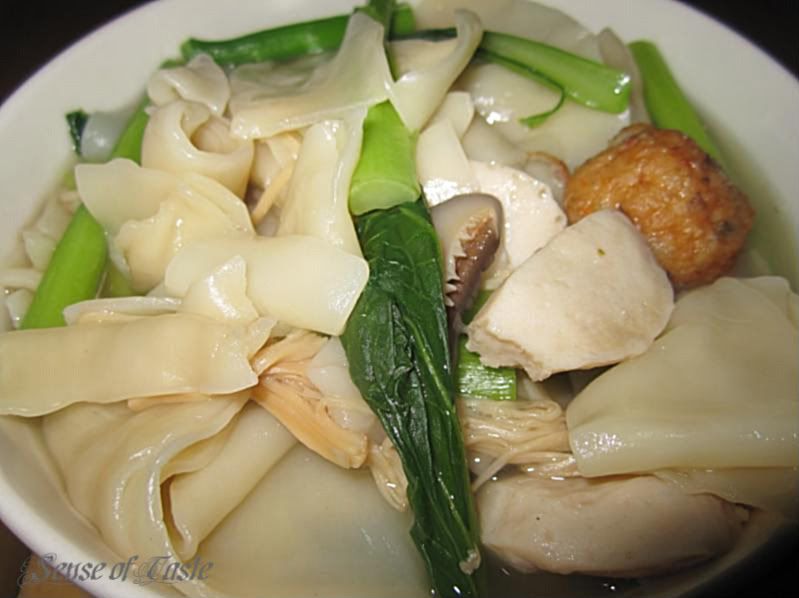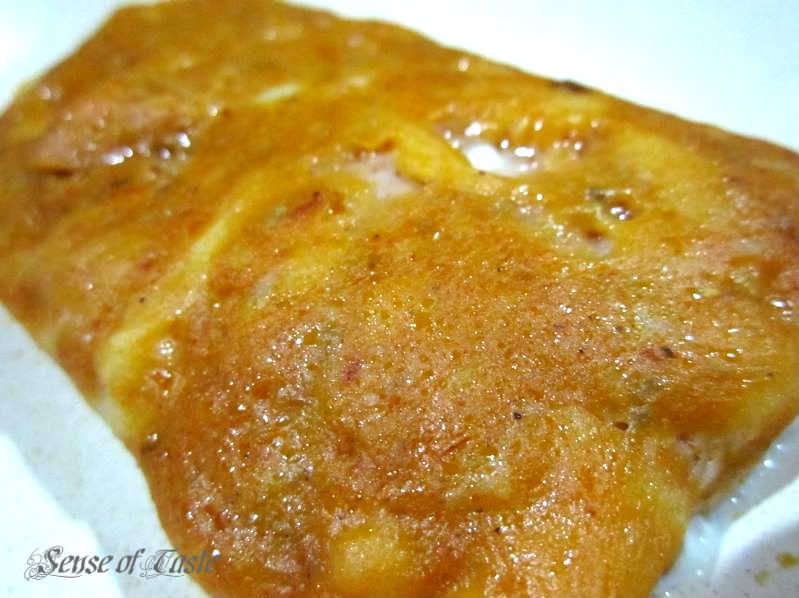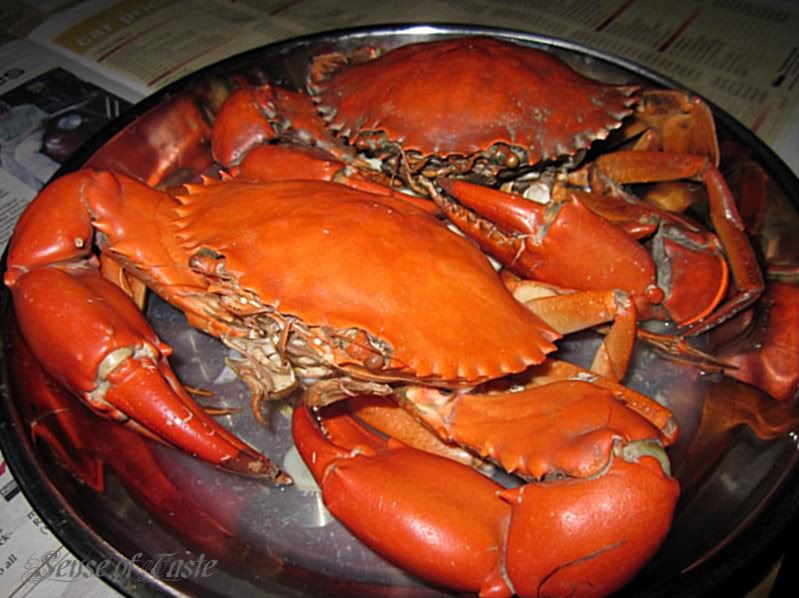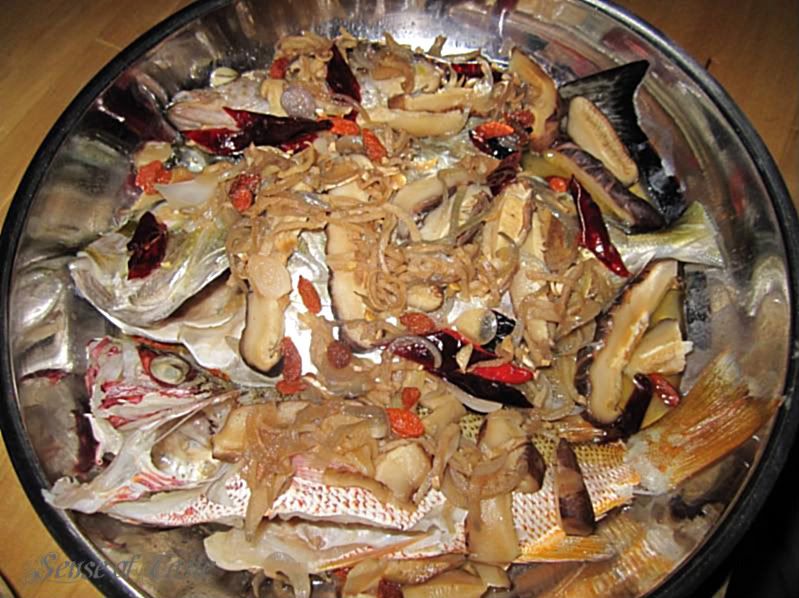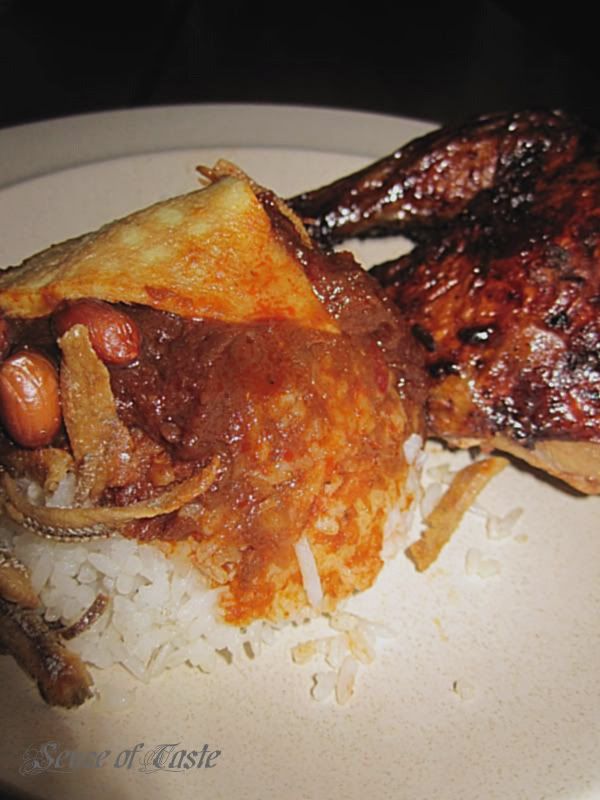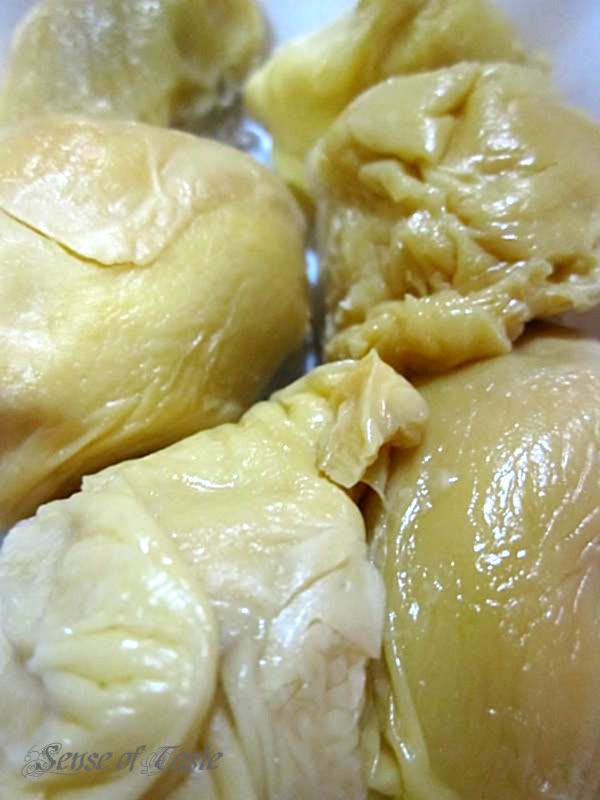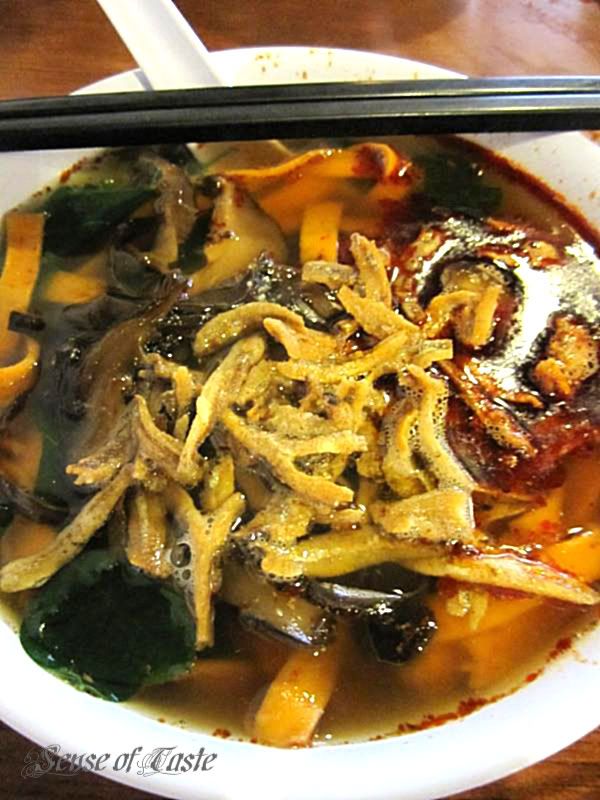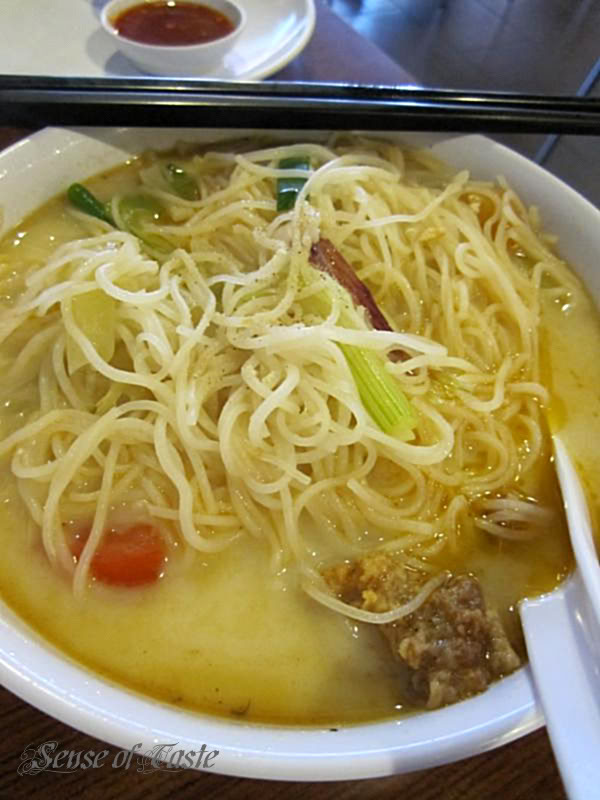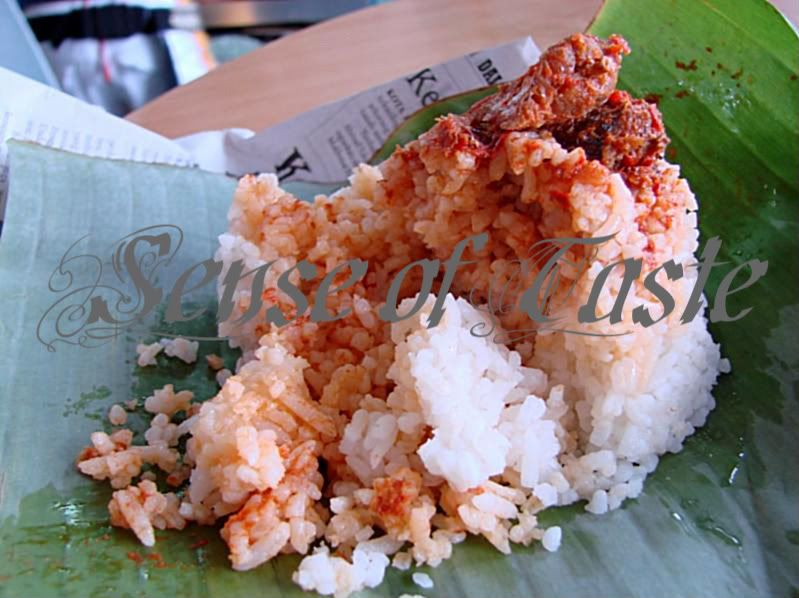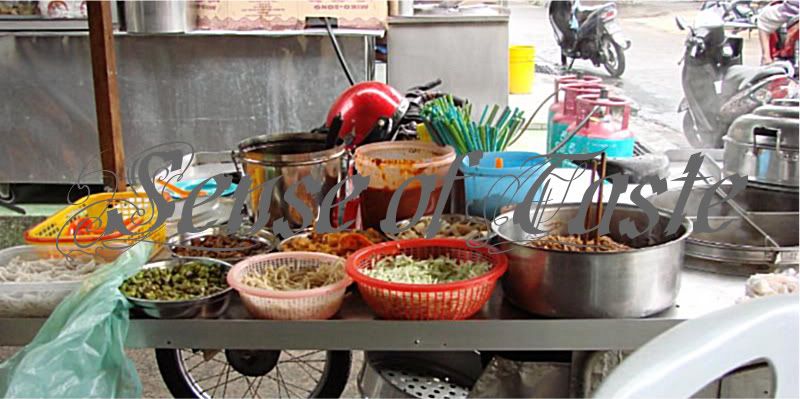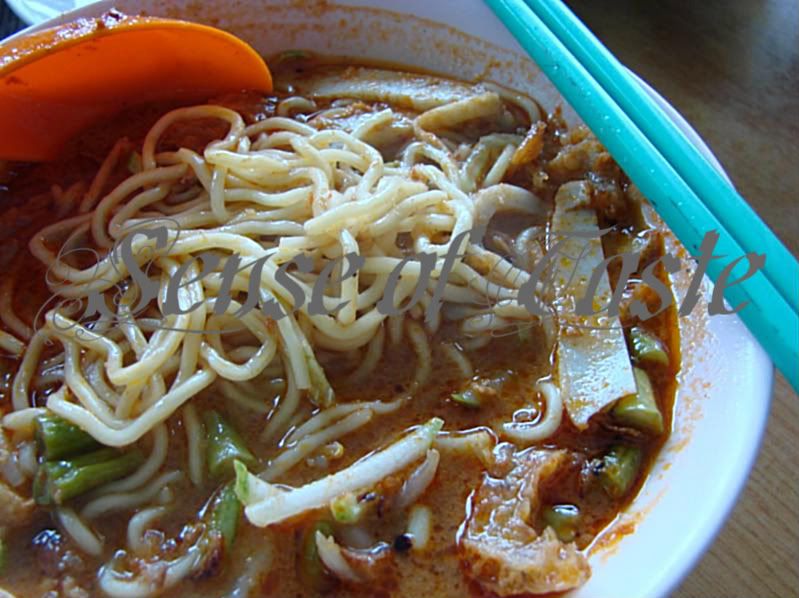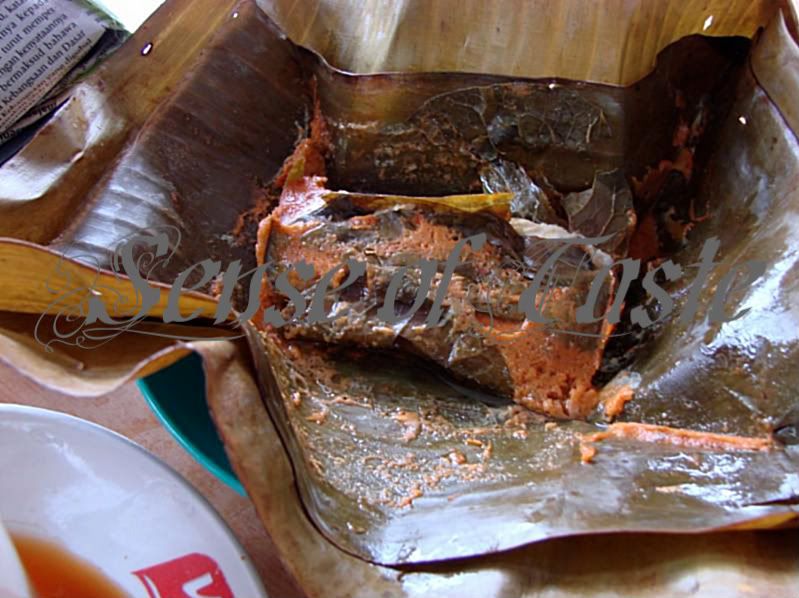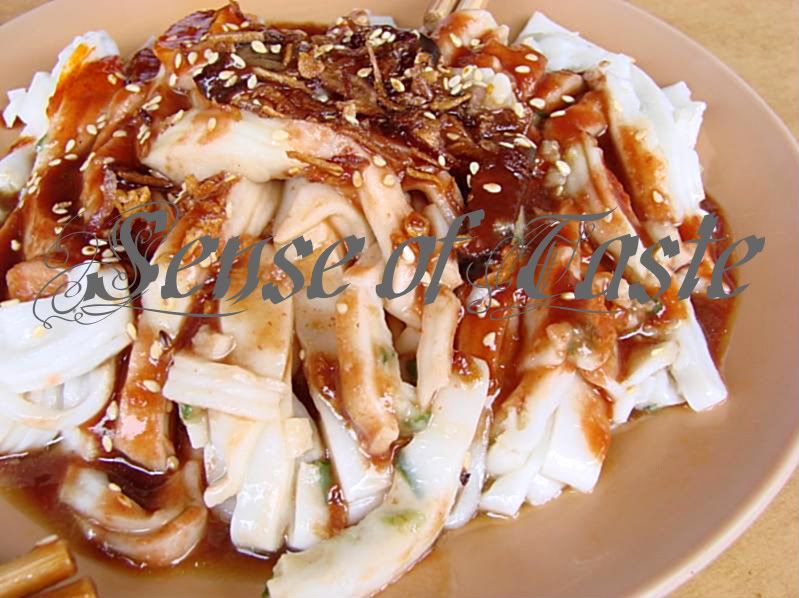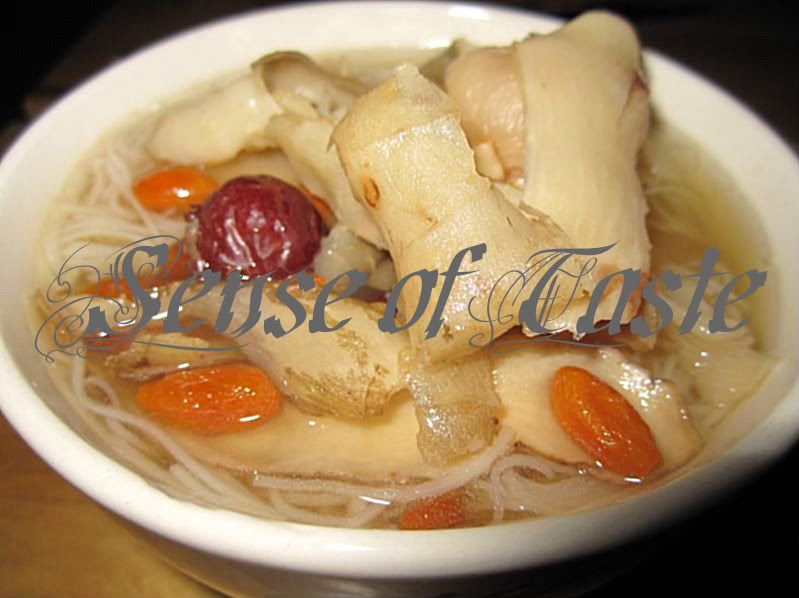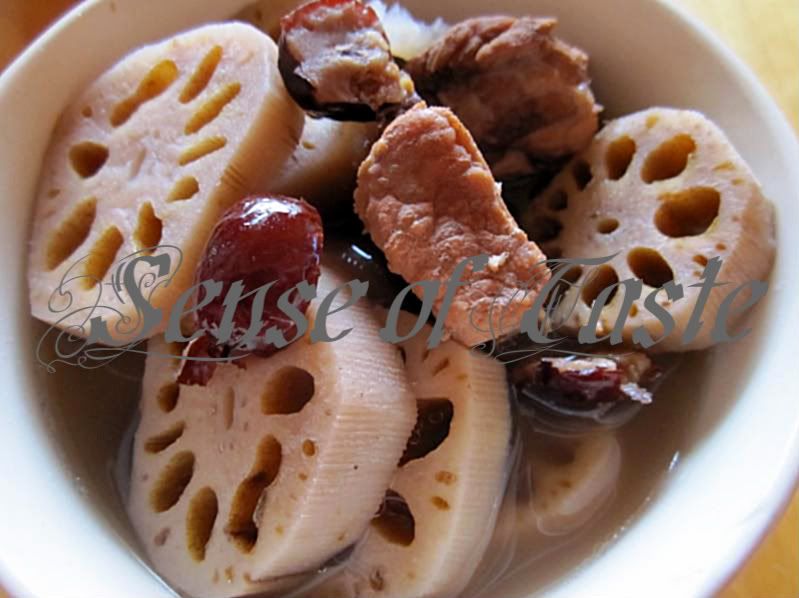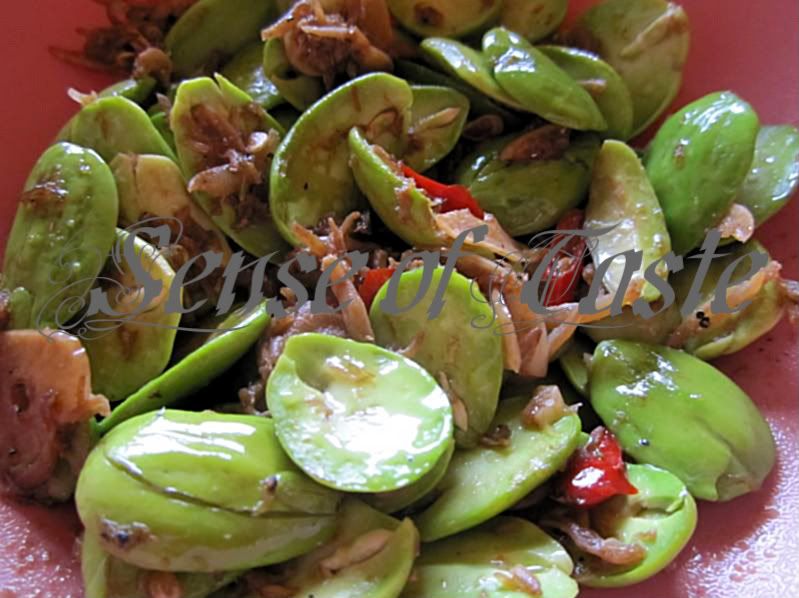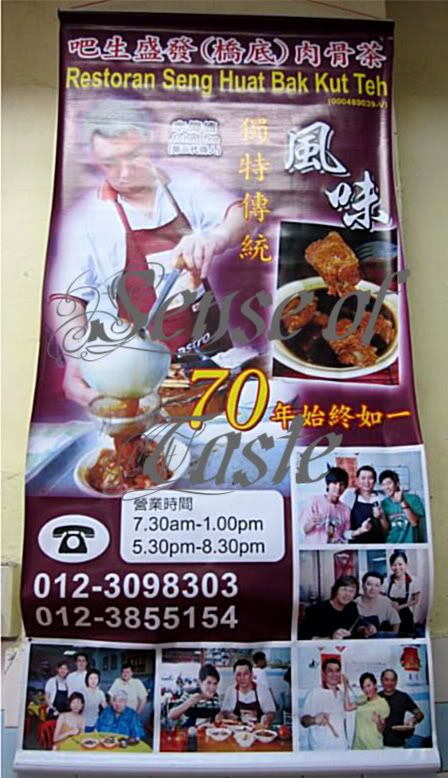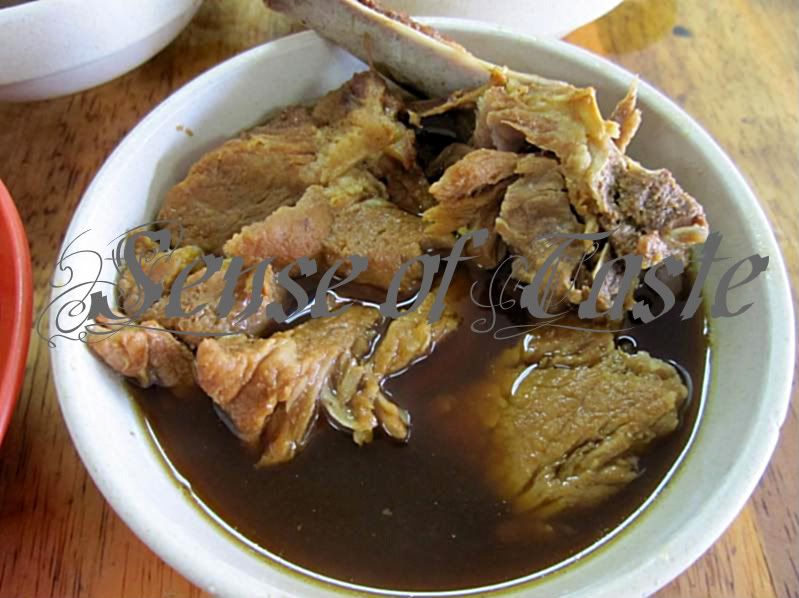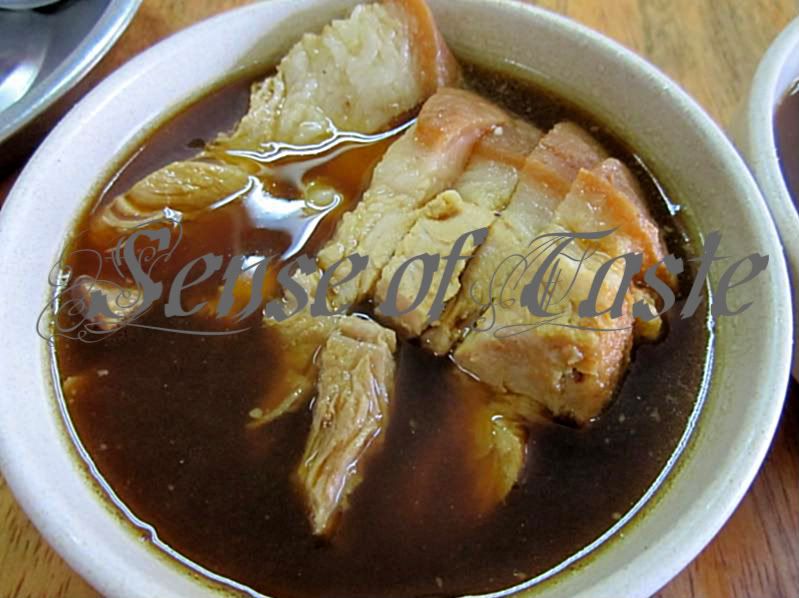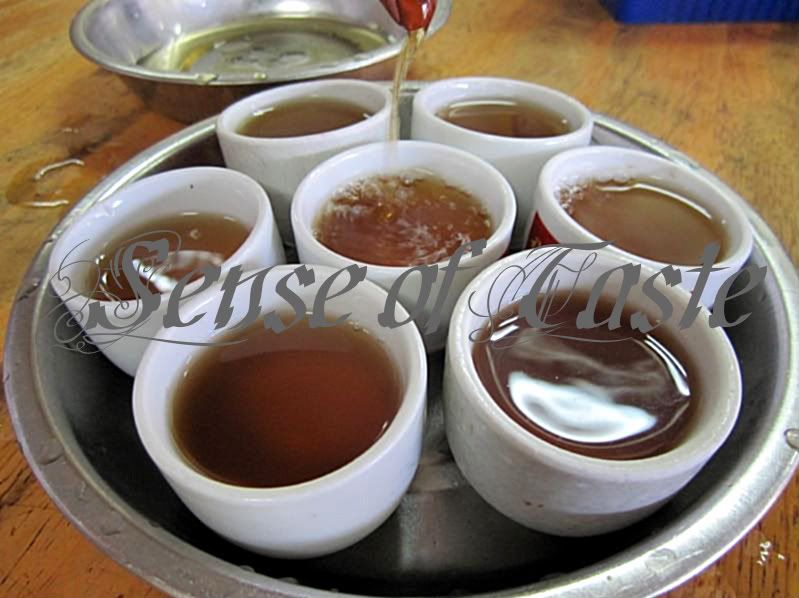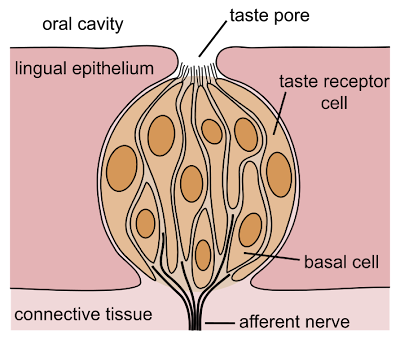Source from Wikipedia, the free encyclopedia
Taste (or, more formally,
gustation;
adjectival form: "gustatory") is a form of direct
chemoreception and is one of the traditional five
senses. It refers to the ability to detect the
flavor of substances such as
food, certain
minerals, and
poisons. In humans and many other vertebrate animals the sense of taste partners with the less direct
sense of smell, in the brain's perception of
flavor. In the West, experts traditionally identified four taste sensations: sweet, salty, sour, and bitter. In the Eastern hemisphere,
piquance (the sensation provided by, among other things, chili peppers) and
savoriness (also known as
umami) have been traditionally identified as basic tastes as well. More recently,
psychophysicists and
neuroscientists have suggested other taste categories (
fatty acid taste most prominently, as well as the sensation of metallic and water tastes, although the latter is commonly disregarded due to the phenomenon of taste adaptation.
[citation needed]) Taste is a sensory function of the
central nervous system. The receptor cells for taste in humans are found on the surface of the
tongue, along the
soft palate, and in the epithelium of the
pharynx and
epiglottis.
Basic tastes
For a long period, it was commonly accepted that there is a finite and small number of "basic tastes" of which all seemingly complex tastes are ultimately composed. Just as with
primary colors, the "basic" quality of those sensations derives chiefly from the nature of human perception, in this case the different sorts of tastes the human
tongue can identify. Until the 2000s, the number of "basic" tastes was considered to be four. More recently, a fifth taste,
savory, has been proposed by a large number of authorities associated with this field.
[18]
Bitterness
Bitterness is the most sensitive of the tastes, and is perceived by many to be unpleasant, sharp, or disagreeable. Common bitter foods and beverages include
coffee, unsweetened
cocoa, South American
mate,
marmalade,
bitter melon,
beer,
bitters,
olives,
citrus peel, many plants in the
Brassicaceae family,
dandelion greens, wild
chicory,
escarole and lemons.
Quinine is also known for its bitter taste and is found in
tonic water. The threshold for stimulation of bitter taste by quinine averages 0.000008 M.
[19] The taste thresholds of other bitter substances are rated relative to quinine, which is given an index of 1.
[19][20] For example,
Brucine has an index of 11, is thus perceived as intensely more bitter than quinine, and is detected at a much lower solution threshold.
[19] The most bitter substance known is the synthetic chemical
denatonium, which has an index of 1,000.
[20] It is used as an
aversive agent that is added to toxic substances to prevent accidental ingestion. This was discovered in 1958 during research on
lignocaine, a local anesthetic, by
Macfarlan Smith of
Edinburgh,
Scotland.
Research has shown that TAS2Rs (taste receptors, type 2, also known as T2Rs) such as
TAS2R38 coupled to the
G protein gustducin are responsible for the human ability to taste bitter substances.
[21] They are identified not only by their ability to taste for certain "bitter" ligands, but also by the morphology of the receptor itself (surface bound, monomeric).
[22] Researchers use two synthetic substances,
phenylthiocarbamide (PTC) and
6-n-propylthiouracil (PROP) to study the
genetics of bitter perception. These two substances taste bitter to some people, but are virtually tasteless to others. Among the tasters, some are so-called "
supertasters" to whom PTC and PROP are extremely bitter. The variation in sensitivity is determined by two common alleles at the TAS2R38 locus.
[23] This genetic variation in the ability to taste a substance has been a source of great interest to those who study genetics.
In addition, it is of interest to those who study
evolution, as well as various health researchers
[19][24] since PTC-tasting is associated with the ability to taste numerous natural bitter compounds, a large number of which are known to be toxic. The ability to detect bitter-tasting, toxic compounds at low thresholds is considered to provide an important protective function.
[25][19][24] Plant leaves often contain toxic compounds, yet even amongst
leaf-eating primates, there is a tendency to prefer immature leaves, which tend to be higher in protein and lower in fiber and poisons than mature leaves.
[26] Amongst humans, various
food processing techniques are used worldwide to detoxify otherwise inedible foods and make them palatable.
[27] Recently it is speculated that the selective constraints on the TAS2R family have been weakened due to the relatively high rate of mutation and pseudogenization.
[28]
Saltiness
Saltiness is a taste produced primarily by the presence of
sodium ions. Other ions of the
alkali metals group also taste salty, but the further from sodium the less salty the sensation is. The size of
lithium and
potassium ions most closely resemble those of sodium and thus the saltiness is most similar. In contrast
rubidium and
cesium ions are far larger so their salty taste differs accordingly.
[citation needed] The saltiness of substances is rated relative to
sodium chloride (NaCl), which has an index of 1.
[19][20] Potassium, as
potassium chloride - KCl, is the principal ingredient in
salt substitutes, and has a saltiness index of 0.6.
[19][20]
Other
monovalent cations, e.g.
ammonium, NH
4+, and
divalent cations of the
alkali earth metal group of the
periodic table, e.g. calcium, Ca
2+, ions generally elicit a bitter rather than a salty taste even though they, too, can pass directly through ion channels in the tongue, generating an
action potential.
Sourness
Sourness is the taste that detects
acidity. The sourness of substances is rated relative to dilute hydrochloric acid, which has a sourness index of 1. By comparison,
tartaric acid has a sourness index of 0.7,
citric acid an index of 0.46, and
carbonic acid an index of 0.06.
[19][20] The mechanism for detecting sour taste is similar to that which detects salt taste. Hydrogen
ion channels detect the concentration of
hydronium ions that are formed from acids and water. Additionally, the taste receptor PKD2L1 has been found to be involved in tasting sourness.
[29]
Hydrogen ions are capable of permeating the
amiloride-sensitive channels, but this is not the only mechanism involved in detecting the quality of sourness. Other channels have also been proposed in the literature. Hydrogen ions also inhibit the potassium channel, which normally functions to hyperpolarize the cell. By a combination of direct intake of hydrogen ions (which itself depolarizes the cell) and the inhibition of the hyperpolarizing channel, sourness causes the taste cell to fire in this specific manner. In addition, it has also been suggested that weak acids, such as CO
2 which is converted into the
bicarbonate ion by the
enzyme carbonic anhydrase, to mediate weak acid transport.
[clarification needed] The most common food group that contains naturally sour foods is the
fruit, with examples such as the
lemon,
grape,
orange, and sometimes the
melon.
Wine also usually has a sour tinge to its flavor. If not kept correctly,
milk can spoil and contain a sour taste. Sour candy is especially popular in North America
[30] including
Cry Babies,
Warheads,
Lemon drops, Shock tarts and Sour
Skittles and
Starburst. Many of these candies contain
citric acid.
Sweetness
Sweetness, usually regarded as a pleasurable sensation, is produced by the presence of
sugars, some proteins and a few other substances. Sweetness is often connected to
aldehydes and
ketones, which contain a
carbonyl group. Sweetness is detected by a variety of
G protein coupled receptors coupled to the
G protein gustducin found on the
taste buds. At least two different variants of the "sweetness receptors" need to be activated for the brain to register sweetness. The compounds which the brain senses as sweet are thus compounds that can bind with varying bond strength to two different sweetness receptors. These receptors are T1R2+3 (heterodimer) and T1R3 (homodimer), which are shown to be accountable for all sweet sensing in humans and animals.
[31] Taste detection thresholds for sweet substances are rated relative to
sucrose, which has an index of 1.
[19][20] The average human detection threshold for sucrose is 10 millimoles per litre. For
lactose it is 30 millimoles per litre, with a sweetness index of 0.3,
[19] and
5-Nitro-2-propoxyaniline 0.002 millimoles per litre.
Savoriness
Savoriness is the name for the taste sensation produced by amino acids such as
glutamate. The compounds that generate savoriness are commonly found in
fermented and aged foods. It is also described as "meatiness", "relish", or having a "rich" taste. Savoriness is considered a fundamental taste in Chinese, Japanese, Thai and Korean cooking, but is not discussed as much in
Western cuisine, at least prior to the introduction of the umami concept in the West.
Humans have taste receptors specifically for the detection of the
amino acids, e.g.,
glutamic acid. Amino acids are the building blocks of
proteins and are found in meats, cheese, fish, and other protein-heavy foods. Examples of food containing glutamate (and thus strong in savoriness) are beef, lamb,
parmesan, and
roquefort cheese as well as
soy sauce and
fish sauce. The glutamate taste sensation is most intense in combination with sodium ions, as found in table salt. Sauces with savory and salty tastes are very popular for cooking, such as
Worcestershire sauce for Western cuisines and
soy sauce and fish sauce for Oriental (East Asian) cuisines.
The additive
monosodium glutamate (MSG), which was developed as a food additive in 1907 by
Kikunae Ikeda, produces a strong savory taste. Savoriness is also provided by the
nucleotides 5’-inosine monophosphate (IMP) and
5’-guanosine monophosphate (GMP). These are naturally present in many protein-rich foods. IMP is present in high concentrations in many foods, including dried
skipjack tuna flakes and
kombu used to make "
dashi", a
Japanese broth. GMP is present in high concentration in dried
shiitake mushrooms, used in much of the
cuisine of Asia. There is a synergistic effect between MSG, IMP, and GMP which together in certain ratios produce a strong savory taste.
Some savory taste buds respond specifically to glutamate in the same way that "sweet" ones respond to sugar. Glutamate binds to a variant of
G protein coupled glutamate receptors.
[32][33]
Further sensations
The tongue can also feel other sensations, not generally classified as tastes or included in the five human tastes. These are largely detected by the
somatosensory system.
Fattiness
Recent research has revealed a potential taste receptor called the
CD36 receptor to be reacting to
fat, more specifically,
fatty acids.
[34] This receptor was found in
mice, but probably exists among other
mammals as well. In experiments, mice with a genetic defect that blocked this receptor didn't show the same urge to consume fatty acids as normal mice, and failed to prepare
gastric juices in their
digestive tracts to digest fat. This discovery may lead to a better understanding of the biochemical reasons behind this behaviour, although more research is still necessary to confirm the relationship between CD36 and the perception of fat.
Calcium
In 2008, geneticists discovered a
CaSR calcium receptor on the tongues of
mice. The CaSR receptor is commonly found in the
gastrointestinal tract,
kidneys and
brain. Along with the "sweet" T1R3 receptor, the CaSR receptor can detect calcium as a taste. Whether closely related genes in mice and humans means the phenomenon may exist in humans as well is unknown.
[35][36]
Dryness
Some foods, such as unripe fruits, contain
tannins or
calcium oxalate that cause an astringent or rough sensation of the mucous membrane of the mouth or the teeth. Examples include
tea,
red wine,
rhubarb and unripe
persimmons and
bananas.
Less exact terms for the astringent sensation are "dry", "rough", "harsh" (especially for wine), "tart" (normally referring to sourness), "rubbery", "hard" or "styptic".
[37]
In the Indian tradition, one of the 6 tastes
[38] is astringency (Kasaaya in Sanskrit, the other five being sweet, sour, salty, bitter and hot/pungent).
In wine terms, "dry" is the opposite of "sweet" and does not refer to astringency. Wines that contain tannins and that cause astringent sensations in the mouth are not necessarily classified as "dry", and "dry" wines are not necessarily astringent.
Metallicness
Most people know this taste (e.g. Cu
2+, FeSO
4, or blood in mouth), however it is not only taste, but also olfactory receptors at work in this case.
[39] Metallic taste is commonly known, however biologists are reluctant to categorize it with the other taste sensations. One of the primary reasons is that it is not one commonly associated with consumption of food. Proponents of the theory argue that the sensation is readily detectable and distinguishable to test subjects.
Prickliness or hotness
Substances such as ethanol and
capsaicin cause a burning sensation by inducing a trigeminal nerve reaction together with normal taste reception. The sensation of heat is caused by the food activating nerves that express
TRPV1 and
TRPA1 receptors. Two main plant derived compounds providing this sensation are
capsaicin from
chili peppers and
piperine from
black pepper. The
piquant ("hot" or "spicy") sensation provided by chili peppers, black pepper and also other spices like ginger and horseradish plays an important role in a diverse range of cuisines across the world, such as
Ethiopian,
Peruvian,
Hungarian,
Indian,
Korean,
Indonesian,
Lao,
Malaysian,
Mexican,
Southwest Chinese (including
Sichuan cuisine), and
Thai cuisines.
If tissue in the oral cavity has been damaged or sensitised, ethanol may be experienced as pain rather than simply heat. Those who have had radiotherapy for oral cancer thus find it painful to drink alcohol.
[citation needed]
This particular sensation is not considered a taste in the technical sense, because it is carried to the brain by a different set of nerves. Although taste nerves are also activated when consuming foods like chili peppers, the sensation commonly interpreted as "hot" results from the stimulation of somatosensory (pain/temperature) fibers on the tongue. Many parts of the body with exposed membranes but without taste sensors (such as the nasal cavity, under the fingernails, or a wound) produce a similar sensation of heat when exposed to hotness agents.
Coolness
Some substances activate cold
trigeminal receptors. One can sense a cool sensation (also known as "fresh" or "minty") from, e.g.,
spearmint,
menthol, ethanol or
camphor, which is caused by the food activating the
TRPM8 ion channel on
nerve cells that also signal cold. Unlike the actual change in temperature described for sugar substitutes, coolness is only a perceived phenomenon.
Numbness
Both Chinese and
Batak Toba cooking include the idea of 麻
má, or
mati rasa the sensation of tingling numbness caused by spices such as
Sichuan pepper. The cuisine of
Sichuan province in China and of North Sumatra province in Indonesia, often combines this with
chili pepper to produce a 麻辣
málà, "numbing-and-hot", or "mati rasa" flavor.
[40]
Heartiness (Kokumi)
Some Japanese researchers refer to the
kokumi in foods laden with
alcohol- and
thiol-groups in their
amino acid extracts which has been described variously as continuity, mouthfulness, mouthfeel, and thickness.
Temperature
Temperature is an essential element of human taste experience. Food and drink that—within a given culture—is considered to be properly served hot is often considered distasteful if cold, and
vice versa.
Some sugar substitutes have strong
heats of solution, as is the case of
sorbitol,
erythritol,
xylitol,
mannitol,
lactitol, and
maltitol. When they are dry and are allowed to dissolve in saliva, heat effects can be recognized. The cooling effect upon eating may be desirable, as in a mint candy made with crystalline sorbitol, or undesirable if it's not typical for that product, like in a cookie.
Crystalline phases tend to have a positive heat of solution and thus a cooling effect. The heats of solution of the
amorphous phases of the same substances are negative and cause a warm impression in the mouth.
